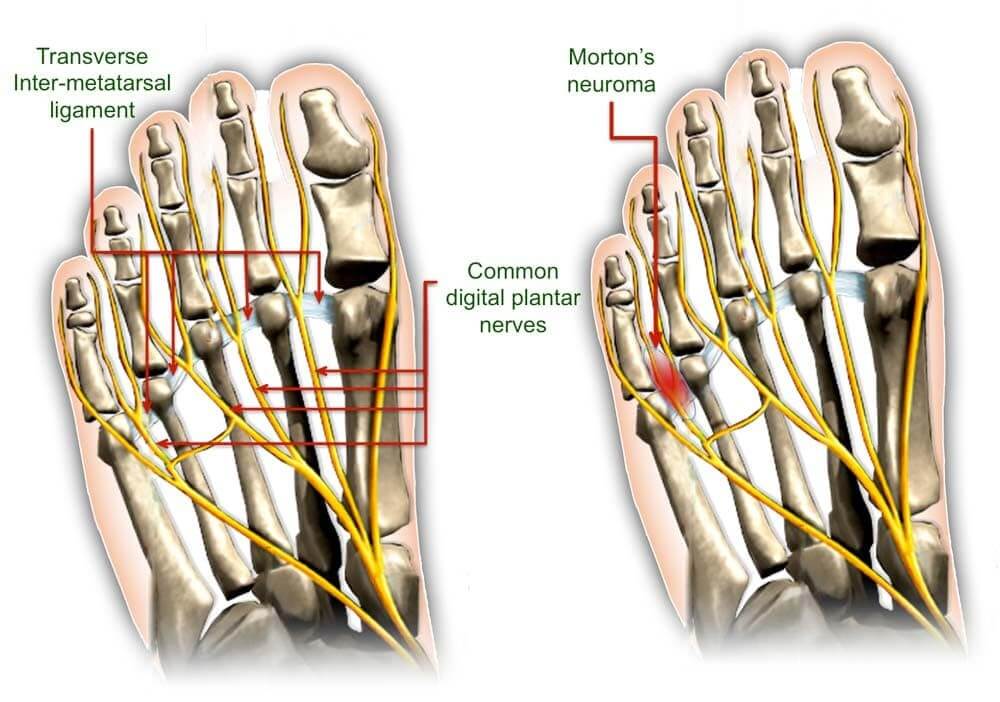Reviewed by Janet D. Pearl, MD, MSc
Morton’s neuroma was first described in 1958 as a neuroma (or nerve tumor) but is not a neuroma and it is not tumor. Morton’s neuroma is a nerve entrapment syndrome. Despite extremely high prevalence in the general population, Morton’s neuroma is very frequently misunderstood by patients as well as physicians.
Although, most cases initially respond to conservative management, a fair percentage of patients may need other measures such as ultrasound guided ablation procedures, or even surgery.
According to latest estimates, the prevalence of Morton Neuroma is as high as 33% in the general population(1). Morton’s neuroma can be a difficult diagnosis because a fair percentage of Morton neuroma cases can mimic common musculoskeletal conditions like tarsal tunnel syndrome, hammertoe, arthritis, ganglion cyst, bursitis, metatarsophalangeal subluxation, foreign body granuloma, or nerve tumors(2).
Women are more likely to develop Morton neuroma as compared to males. The histopathology (or tissue findings) of Morton’s neuroma are fairly similar to other entrapment neuropathies such as Carpal tunnel syndrome with areas of perineural fibrosis.

The pathophysiology of Morton neuroma revolves around the compression of common plantar digital nerve (also referred to as intermetatarsal nerve) due to persistent exposure to pressure as a result of overcrowding or overriding phenomena of metatarsal heads. The common risk factors that may aggravate the risk of overcrowding are:
A typical neuroma or nerve tumor is a benign or malignant growth that usually arises from the nerve tissues to cause pain and sensory/ motor deficits. The American College of Foot and Ankle Surgeons defines Morton neuroma as compression neuropathy of the intermetatarsal nerve or common digital nerve.
Morton’s neuroma is not a tumor or abnormal growth because:
Morton’s neuroma can be best explained as a swollen, inflamed nerve that may compromise your productivity and mobility if not managed adequately. It is highly recommended to see a healthcare professional in order to address that gnawing, burning pain in your foot.
References:


By providing us with your information you are consenting to the collection and use of your information in accordance with our Terms of Service and Privacy Policy.